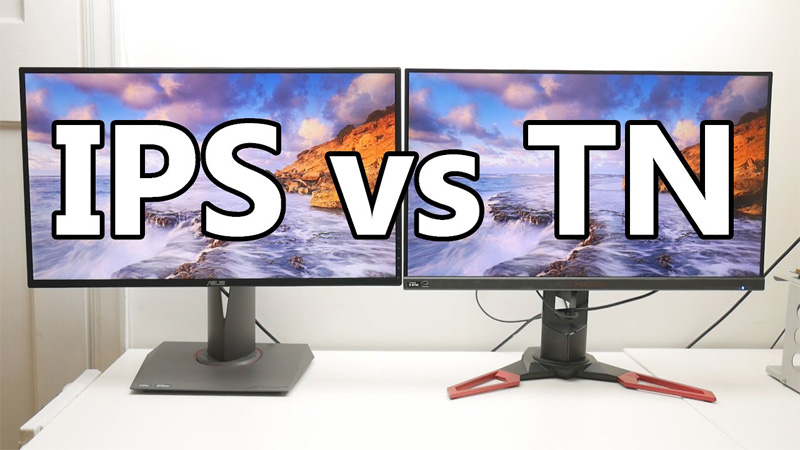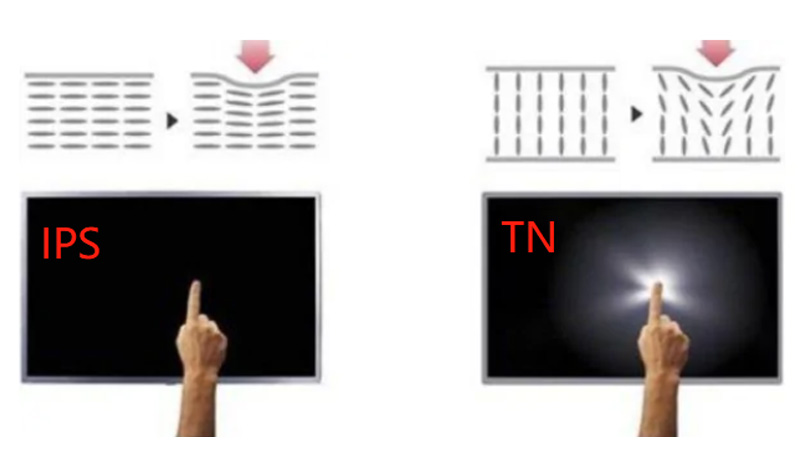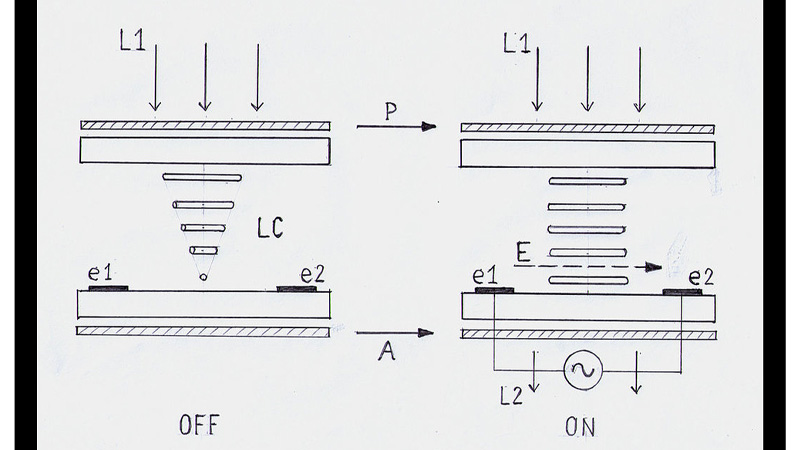
TN Panel Vs IPS: Which One Is the Best for You?
If you’re in the market for a new laptop, then you may already have a good idea of what you’re searching for. Components like screen size, resolution, core processors, graphics cards are all essential when narrowing down what you want from your computer.
However, these aspects only encompass the baseline of what makes a laptop’s display perform well. Many laptops today use LCDs, as they offer decent image quality that can be produced and sold at an affordable price. The quality of the LCD display will depend on its panel type. These panel types include TN, IPS, and VA.
If you’re someone looking to enhance their laptop’s display quality, then it’s important to know which panel type will produce better results. Here, we will explore the differences between TN panels, IPS panels, and include VA panels into the mix to help you make an informed decision about your purchase.
1. How Do LCDs Work?
LCD screens work with three glass panels, each colored red, green, and blue, that act as color filters. Throughout the color filters, liquid crystals run between them. These crystals are included because they change and adapt to electrical currents and can assist in controlling light.
When the backlight is powered, the crystals respond to the light and change in orientation, manipulating the light as it passes through the color panels, projecting the results onto the two pieces of polarized glass that showcase images, video, and other sources of information.
When you’re purchasing a product with an LCD screen, its performance will depend on what panel types it uses, and how it manipulates liquid crystals to produce images on your screen.
Everything You Should Know About TN Panels
TN panels, also called twisted nematic panels, are the most common type of panel you’ll find in an LCD screen. These panels are reliable, and helped replace the now outdated version of display, CRT (cathode ray tube), with higher image quality.
In a TN panel, these crystals twist and untwist according to the amount of light produced to help display different colors. They are sandwiched between two polarized pieces of glass in a parallel alignment, and when there’s zero brightness, the panels can turn the subpixels of the display off to conserve energy.
TN panels have a response time of 1 ms, meaning they can display new frames up to 144 times per second. For computers running fast-paced motion games, this display panel can create better motion clarity without impacting game performance. Most of all, these panels are simple and cost-effective to produce, making them a budget-friendly option to produce and sell at mass quantity.
However, TN panels also come with limitations. These panels have a poor contrast ratio, which can affect the appearance of an image of video when editing it. While it covers 100% of the RGB ratio, it has limits in its ability to render sharp, extreme angles, and can cause images to appear distorted.
Everything You Should Know About IPS Panels
IPS panels, known as in-plane switching panels, were originally developed to improve the colors and viewing angles of thin-film-transistor displays. TFT, in this case, refers to the predecessor of both TN panels and IPS panels.
IPS panels also use liquid crystals to change the image’s display, but instead of using a twisting-untwisting method, it uses a rotating mechanism to allow light to pass through. IPS panels, because of this development, can produce excellent picture quality and have become another standard choice for computers and other gadgets.
Because of the rotating mechanism, it’s able to provide better color accuracy at a higher bit depth. It can provide 100% DCI-P3, which greatly improves the gamut quality of moving images, making it an excellent display for digital cinema. If you view the screen from a less-than-ideal angle, you’ll still be able to have a great viewing experience because of its ability to adapt to angle changes.
Despite these benefits, IPS panels have a low response time of 4ms. Because of its low response time, these displays tend to suffer more from backlight bleeding and IPS glow issues in moving images, making it less than ideal for high-pace environments.
What You Should Know About VA Panels
VA panels, also called vertical alignment panels, were made to be the in-between choice between TN panels and IPS panels. VA panels use liquid crystals aligned at both a vertical and perpendicular arrangement throughout the glass substrate. By utilizing this method of crystal placement, it’s able to offer stable, decent picture quality.
As the in between choice, VA panels are considered excellent for blocking out backlight for more uniformity. It also offers the best contrast ratio, sitting between 2500:1 and 6000:1. It’s also able to reproduce color exceedingly well in comparison to a standard RGB color display, producing more vibrant colors than TN or IPS panels. It also boasts a decent response time between 2ms and 3ms, making it like IPS displays.
Despite this, it has the slowest response time and slow pixel transitions, which causes blurry trails of light in fast-moving visuals, also known as visual ghosting. For those looking for gaming laptops, VA panels do not boast the best performance for your gaming experience.

2. TN vs IPS vs VA Panels: A Comparison
Each panel excels in different categories, so it’s important to understand the factors affecting each panel type so you can make the best decision for your purchase. Below, we’ll outline all the factors affecting the performance of these panel types to give you a basic overview of which LCD screen you should choose.
Refresh Rate:
The refresh rate of a monitor refers to how many times an image is updated on the screen per second. The faster the response time, the better the monitor will perform for high-paced, smooth motion pictures.
● TN: TN panels offer the fastest response time of 1 ms, making them the best option for gaming, as they produce the least amount of ghosting and light trailing.
● IPS: IPS, in general, have a slower response time of 4ms. However, some models can go as high as 1 ms, outperforming TN in unique cases.
● VA: VA has the slowest response time, ranging between 4 to 5 ms. These panels are vulnerable to motion blur, making them a poor-quality choice for gaming and high-motion environments.
Color Accuracy:
Color accuracy refers to the panel’s ability to produce hues of color at a greater accuracy. While none of these panels can replicate how the human eye sees color, some panels are able to outperform others when it comes to color accuracy.
● TN: TN panels produce the poorest color accuracy. While it offers the fastest response time, it becomes a tradeoff, causing colors to shift and distort at different angles, making it a poor choice for those in graphic design or those who need accurate color display.
● IPS: IPS panels can display accurate, consistent colors, and are able to offer them at a higher gamut quality. It’s considered the best choice for those whose careers deal with graphic design.
● VA: As an in between choice, VA also offers excellent color visuals at a higher contrast ratio, allowing colors to appear more vibrant. Because of this, it’s considered a good option for general media consumption and casual gaming experiences.
Viewing Angles:
Viewing angles refer to how visuals appear at extreme angles. While most people will view the screen from head-on, viewing the screen from the top or sides can also affect how the picture appears.
● TN: TN panels experience the most limits with viewing angles at around 170 to 160 degrees. If the picture is viewed from the side or top, the colors often become washed out. However, if you only intend on viewing your screen from the front, then the TN panels will provide sufficient viewing.
● IPS: IPS have a larger viewing angle above 170 degrees, giving people the ability to view images with high color and contrast at almost any angle.
● VA: VA panels offer better viewing angles than TN panels, but at extreme angle views the image quality will experience some levels of color shifting and contrast loss.
Cost-Effectiveness:
Purchasing an LCD screen should provide better value for your money. If you’re being budget-conscious about your options, then you should look for devices that provide screens that offer the best in price.
● TN: Screens with TN panels are the most affordable, providing fast response times and refresh rates. They’re the most cost-effective choice for those who value speed over color accuracy and viewing angles.
● IPS: Devices with IPS panels are often the most expensive of the three options due to their focus on color accuracy and viewing angle capabilities. These screens are considered excellent for options like video editing and graphic design.
● VA: VA panels can vary in price, but are usually a mid-range price option for those who want to be able to have fast refresh rates for gaming and better color accuracy for media consumption.

3. Which Panel Is Best for Graphic Design?
For those to use their screens for graphic design purposes, LCD screens with IPS panels will provide the most options. IPS panels are favored for their ability to cover a wide color gamut and provide the most accurate color consistency on the market.
Which Panel Is Best for Gaming?
For those intending to use their LCD screen for gaming, screens with TN panels will benefit. TN panels have the quickest response time, support high refresh rates, and the screens can display more frames per second. These screens also experience less motion blur and ghosting because of its ability to adapt to fast-paced visuals.
Which Panel Is Best for General Use?
If you intend on using your screen for general web browsing or watching videos, then VA panels will provide the best of both worlds. VA panels will offer a faster refresh rate than IPS panels and offer better color accuracy than TN panels. If you only intend to use your device for general purposes, then a LCD screen made with VA panels will work best for you.

4. Consult For the Best Screen Display
Regardless of which device you choose, you need a video controller that can pull it all together and deliver an outstanding experience. The LEDSINO Colorlight C-Series Cloud Networking Master Controller can meet any demand while providing versatile control options through its cloud-based system.
When you’re having trouble choosing what LCD screen will fit your budget, it always pays to reference experts in advanced LCD technology. The team at LEDSINO can help you find the right video display that fits your needs and gives you the best viewing experience.
We can offer a range of LCD screen options from purchase to rental. We want to ensure that type of display works for you and your budget, so contact our experts for a consultation today!